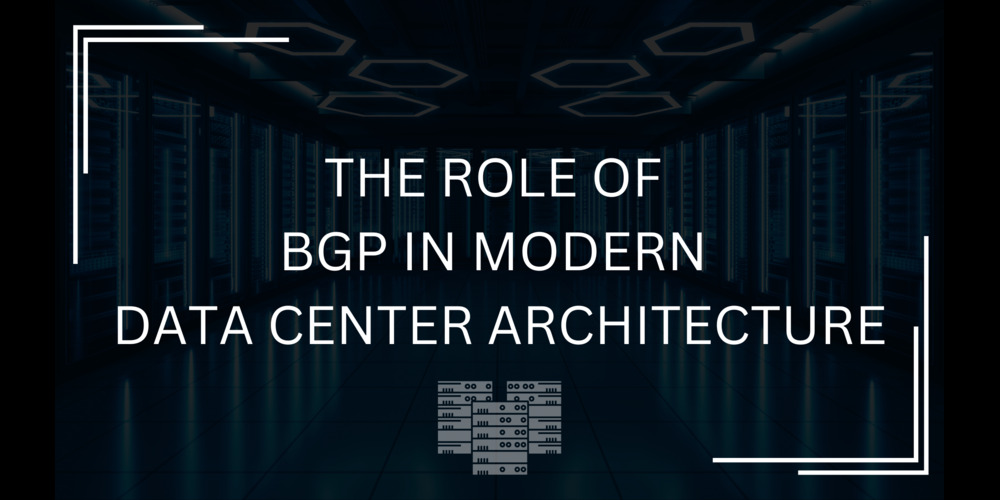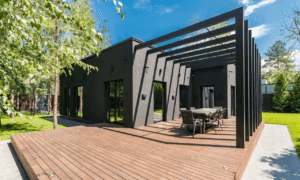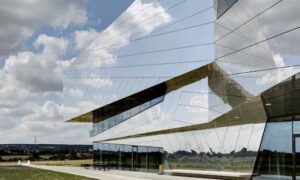Data centers form the backbone of the modern IT infrastructure, providing the necessary resources for computing, storage, and networking that drive today’s digital economy.
As organizations increasingly rely on cloud computing, big data, and IoT (Internet of Things) applications, the need for robust, scalable, and efficient data center architecture becomes paramount.
A critical component in this architecture, especially for professionals seeking expertise in CCIE Data Center, is the Border Gateway Protocol (BGP). BGP plays a vital role in routing data across the global internet and within data centers.
What is BGP (Border Gateway Protocol)?
BGP is the protocol that enables data routing decisions on the internet. It is a standardized exterior gateway protocol used to exchange routing information between different networks, known as autonomous systems (AS).
BGP was initially designed to maintain a table of IP networks, ensuring that data packets are routed efficiently and correctly from source to destination.
- Historical Context and Evolution of BGP
BGP was first introduced in 1989 as a replacement for the Exterior Gateway Protocol (EGP). Over the years, BGP has evolved to address the growing complexity and scale of the internet. The current version, BGP-4, includes support for Classless Inter-Domain Routing (CIDR) and route aggregation, which are essential for managing IP address spaces efficiently.
- Basic Functioning of BGP in Networking
BGP operates by maintaining a table of IP prefixes (routes) and exchanging routing information between BGP peers (routers). It uses path vector mechanisms to ensure loop-free and efficient routing decisions.
BGP peers communicate via TCP, ensuring reliable transmission of routing updates. The decision process in BGP considers multiple attributes, such as path length, policies, and rule sets, to determine the best route for data packets.
BGP in Traditional Data Centers
- Overview of Traditional Data Center Architecture
Traditional data centers are typically designed with hierarchical networking models, including core, distribution, and access layers. These layers are interconnected through various routing and switching protocols, with BGP often playing a critical role at the core and distribution layers.
- Role and Implementation of BGP in Traditional Data Centers
In traditional data centers, BGP is used to connect the data center network to external networks, such as the internet or other enterprise networks. It helps in route aggregation, redundancy, and load balancing, ensuring high availability and reliability of network services.
- Limitations and Challenges Faced with BGP in Traditional Setups
Despite its effectiveness, BGP in traditional data centers can face limitations, such as complexity in configuration, scalability issues, and suboptimal performance in dynamic environments. These challenges necessitate the evolution of BGP to meet modern data center demands.
Modern Data Center Requirements
- Description of the Needs and Demands of Modern Data Centers
Modern data centers demand highly scalable, flexible, and available network architectures to support diverse workloads and applications. Key requirements include:
- Scalability: Ability to handle increasing amounts of traffic and resources.
- Flexibility: Support for dynamic changes and rapid deployment of services.
- High Availability: Ensuring continuous operation with minimal downtime.
- Impact of Cloud Computing and Virtualization on Data Center Architecture
The advent of cloud computing and virtualization technologies has transformed data center architecture. These technologies enable resource pooling, on-demand provisioning, and efficient resource utilization, driving the need for advanced networking solutions like BGP.
The Evolving Role of BGP in Modern Data Centers
- Transition from Traditional to Modern Data Center Environments
Modern data centers are transitioning from traditional hierarchical models to flatter, more distributed architectures. This shift necessitates the evolution of BGP to support multi-tenant environments, automated management, and integration with emerging technologies.
- How BGP Adapts and Evolves to Meet Modern Data Center Requirements
BGP has evolved to incorporate features like BGP FlowSpec for traffic filtering, BGP-LS for topology discovery, and enhancements for seamless integration with SDN (Software-Defined Networking) and NFV (Network Function Virtualization).
These adaptations enable BGP to meet the scalability, flexibility, and performance needs of modern data centers.
- Integration of BGP with Software-Defined Networking (SDN) and Network Function Virtualization (NFV)
SDN and NFV are revolutionizing data center networking by decoupling control and data planes, allowing for centralized management and dynamic provisioning of network resources.
BGP plays a crucial role in this ecosystem by providing robust and scalable routing solutions that integrate seamlessly with SDN controllers and NFV orchestrators.
Key Benefits of Using BGP in Data Center Architecture
Improved Scalability and Flexibility
BGP supports hierarchical routing and route aggregation, enabling scalable network architectures that can grow with the demands of modern applications.
Enhanced Network Performance and Reliability
BGP’s ability to manage multiple paths and provide redundancy ensures high network performance and reliability, critical for maintaining service continuity in modern data centers.
Simplified Management and Automation
With features like BGP-LS and integration with SDN, BGP simplifies network management and enables automation, reducing operational complexities and costs.
Increased Security and Policy Control
BGP allows for granular policy control and security measures, such as route filtering and prefix validation, enhancing the overall security posture of data center networks.
BGP Features and Benefits
| Feature | Benefit |
| Route Aggregation | Improved scalability |
| Multi-Path Support | Enhanced network performance and redundancy |
| BGP FlowSpec | Advanced traffic filtering and control |
| BGP-LS | Simplified topology discovery and network automation |
| Integration with SDN and NFV | Increased flexibility and dynamic resource management |
| Security Enhancements | Enhanced network security and policy control |
Real-World Applications and Case Studies
- Examples of Successful BGP Implementations in Modern Data Centers
Numerous organizations have successfully implemented BGP in their modern data centers. For instance, Google employs BGP to manage its global network infrastructure, ensuring efficient routing and high availability for its services.
- Case Studies Highlighting the Benefits and Efficiencies Gained
A case study of Facebook’s data center architecture illustrates the benefits of using BGP for scalability and reliability. By leveraging BGP, Facebook has built a resilient network that supports its massive user base and data traffic.
Challenges and Considerations
- Potential Challenges in Implementing BGP in Modern Data Centers
Implementing BGP in modern data centers can present challenges, such as configuration complexity, convergence time, and maintaining consistent policies across distributed environments.
- Technical Considerations and Best Practices for Overcoming These Challenges
Addressing these challenges requires careful network design, adoption of automation tools, and implementing best practices like route summarization and frequent updates of routing policies.
- Security Concerns and Mitigation Strategies
Security is a critical consideration for BGP implementations. Mitigation strategies include using BGPsec for secure route propagation, prefix filtering to prevent route hijacking, and implementing robust authentication mechanisms.
Future Trends and Innovations
- Emerging Trends in Data Center Networking and BGP’s Role
Future trends in data center networking include increased adoption of SDN, advancements in NFV, and the rise of edge computing. BGP will continue to play a pivotal role in these trends, providing scalable and reliable routing solutions.
- Innovations in BGP Technology and Related Protocols
Innovations in BGP technology, such as BGP EVPN (Ethernet VPN) and Segment Routing, are enhancing its capabilities, making it more suitable for modern data center environments.
- Predictions for the Future of BGP in Evolving Data Center Landscapes
The future of BGP in data centers looks promising, with ongoing developments aimed at improving its scalability, security, and integration with emerging technologies. BGP is expected to remain a cornerstone of data center networking for the foreseeable future.
Conclusion
BGP plays a critical role in modern data center architecture, offering scalability, reliability, and security. Its evolution to meet the demands of modern data centers, integration with SDN and NFV, and ongoing innovations ensure that BGP will continue to be a key enabler of efficient and resilient data center networks.
Professionals undergoing CCIE Data Center Training benefit from mastering BGP’s complexities, ensuring they can implement and optimize these crucial protocols in real-world scenarios.
Read More From Techbullion And Businesnewswire.com



































